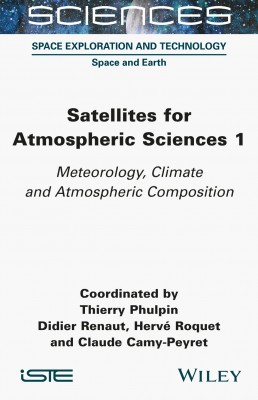
Edited by
Thierry Phulpin, Météo-France, Lannion, France.
Didier Renaut, Météo-France, Paris, France.
Hervé Roquet, Météo-France, Lannion, France.
Claude Camy-Peyret, Institut Pierre Simon Laplace, Paris, France.
How can atmospheric variables such as temperature, wind, rain and ozone be measured by satellites? How are these measurements taken and what has been learned since the first measurements in the 1970s? What data are currently available and what data are expected in the future? The first volume of this encyclopedic book answers these questions by reporting the history of satellite meteorology and addresses how national and international agencies define coordinated programs to cover user needs. It also presents the principles of satellite remote sensing to deliver products suited to user requirements. This book is completed by a glossary and appendices with a list of supporting instruments already in use.
Part 1. Satellite Observation of the Earth’s Atmosphere: International Cooperation.
1. History of Meteorological Satellites, Sylvain Le Moal.
2. Contribution of the National Oceanic and Atmospheric Administration (NOAA, USA) Meteorological Satellites Program: An Overview, Sid-Ahmed Boukabara, Mitch Goldberg, Timothy J. Schmit, Andrew Heidinger, Satya Kalluri, Patricia Weir, Frank Gallagher, David Spencer, and Ross N. Hoffman.
3. The Role of the National Aeronautics and Space Administration (NASA, USA), Michael Seablom.
4. The Role of the European Space Agency (ESA), Paul Ingmann.
5. The Role of EUMETSAT (Europe), François Montagner.
6. The Role of the National Center for Space Studies (CNES, France), Carole Deniel and Pierre Tabary.
7. A Coordinated International Effort, Jérôme Lafeuille.
Part 2. The Physical Basis.
8. Satellite Orbits for Atmospheric Observation, Michel Capderou.
9. Measurement Physics, Clémence Pierangelo, Fatima Karbou, and Claude Camy-Peyret.
10. The Inverse Problem and Techniques for Atmospheric Variable Retrieval, Clémence Pierangelo.
Thierry Phulpin is a senior expert in space missions for atmospheric sciences. He has been a researcher at Météo-France, Lannion, then program scientist on missions for meteorology (IASI, IASI-NG) and air quality (TRAQ, 3MI) at the CNES, Toulouse.
Didier Renaut is a meteorological engineer, now retired. He made his career at Météo-France, Paris, then at the CNES, Paris, where he was in charge of meteorological and climate programs. He has also worked in the field of scientific publishing.
Hervé Roquet is a meteorological engineer at Météo-France. After several years at the Space Meteorology Center of Météo-France in Lannion, he joined the Higher Education and Research Department of Météo-France in Saint-Mandé in 2017, where he is the deputy director.
Claude Camy-Peyret is currently emeritus scientist at Institut Pierre Simon Laplace, Paris. He is also a retired research director at the CNRS, Paris. From 1996 to 2008 he was the head of LPMAA at Sorbonne Université, Paris.